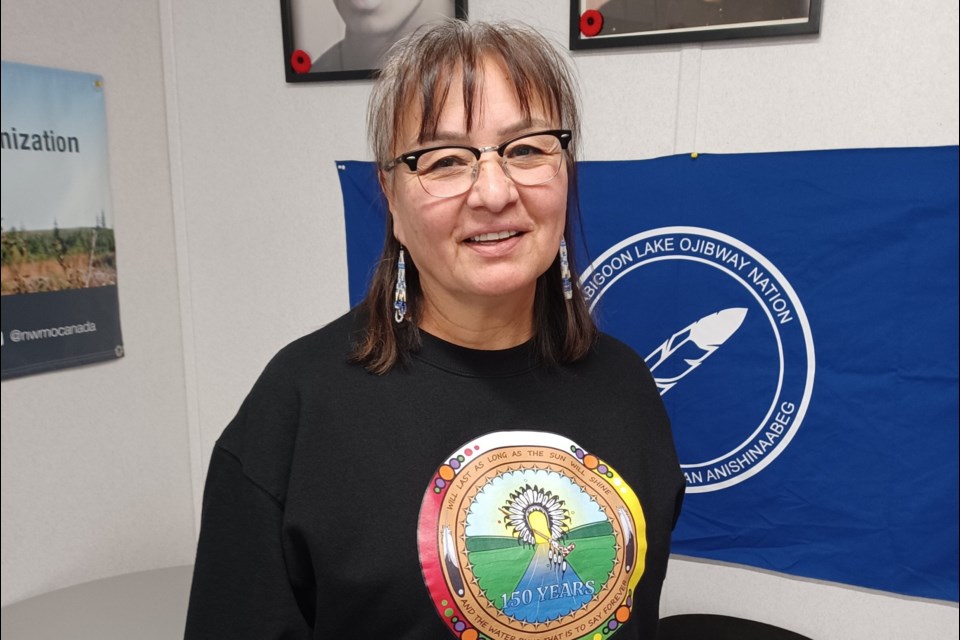WABIGOON LAKE OJIBWAY NATION – “It’s time to make a decision,” Danine Chief said in her Main Street office.
Well, almost.
Wabigoon Lake Ojibway Nation will hold a referendum in 2024 on whether the Treaty 3 community is willing to host a repository for spent nuclear fuel.
“We’ll be asking all of our members to help make the decision,” said Chief, the First Nation’s Adaptive Phase Management project manager. “It’s not a chief-and-council decision. It’s an everybody decision.”
Precisely what Wabigoon Lake members will be asked in the referendum and when they’ll be asked will be determined by band council, she said.
About 800 members are eligible to vote. Most live off-reserve, as just 200 or so live on the reserve southeast of Dryden.
The Nuclear Waste Management Organization (NWMO) has Wabigoon Lake on its shortlist of two finalists for the future site of a deep geological repository (DGR) for spent fuel from Canadian nuclear power plants.
The other site under consideration is in the Saugeen Ojibway Nation-South Bruce area of southern Ontario.
A DGR is a facility constructed hundreds of metres underground for the long-term management of nuclear waste.
Finland will soon have the world’s first operational DGR, on Olkiluoto Island in the Gulf of Bothnia, for the placement of radioactive waste produced by the Nordic country’s nuclear power plants.
Eighteen Wabigoon Lake members, including Chief, toured Finland’s DGR this past summer in a trip paid for by the NWMO.
Chief said the delegation found Finland’s DGR to be “what they expected it to be, which was like a mining site. So there were no big revelations one way or another.”
The Finland junket was part of the learning process as Wabigoon Lake members wrestle with the question of whether they would be willing to allow Canada’s future DGR to be constructed in an uninhabited spot on the reserve’s 5,200 hectares.
A further delegation of 10 Ignace residents plus individuals from Dryden, Lac Seul First Nation and Atikokan toured the Finland repository and a nearby nuclear plant in early November, also in a trip funded by the NWMO.
Ignace, like Wabigoon Lake, is in the midst of a “willingness process” to decide whether it wants to be a host community for DGR operations.
Wabigoon Lake’s process has included “lots of community presentations” so that members will have enough information to make up their minds about the NWMO’s proposal, Chief said.
The First Nation has also held two gatherings in Winnipeg to which all members aged 17 and up were invited, she added. The more recent gathering drew nearly 500 participants, she said.
It’s been quite a learning process for everyone, she said, noting that she “had no idea” where her electricity came from when she came on board as the First Nation’s nuclear liaison in 2015.
“I turned on the lights and, you know, I was glad the lights came on. But now, learning that 60 per cent of it comes from nuclear … We’ve just been on a big learning journey here.”
Chief said the people of Wabigoon Lake Ojibway Nation don’t take the matter in front of them lightly.
“At the end of the day, I hope that we make the right decision for all of Canada,” she said. “It’s a national project and the waste is there, and I just hope that we make the right decision.”
